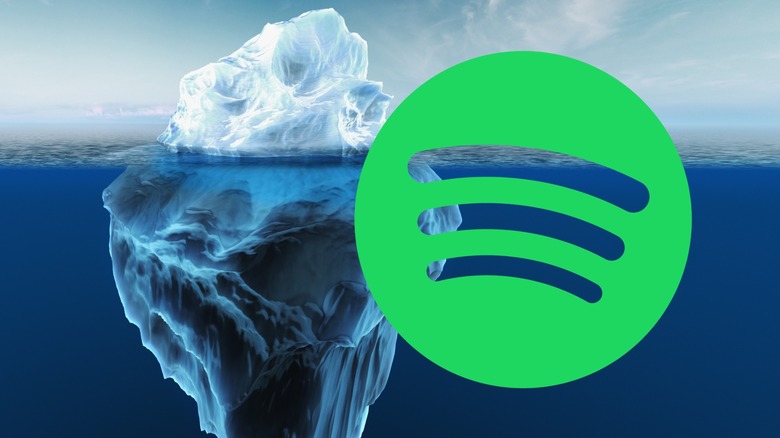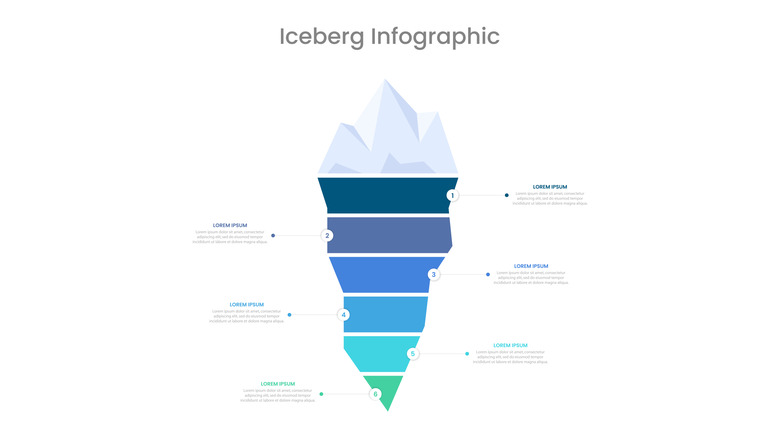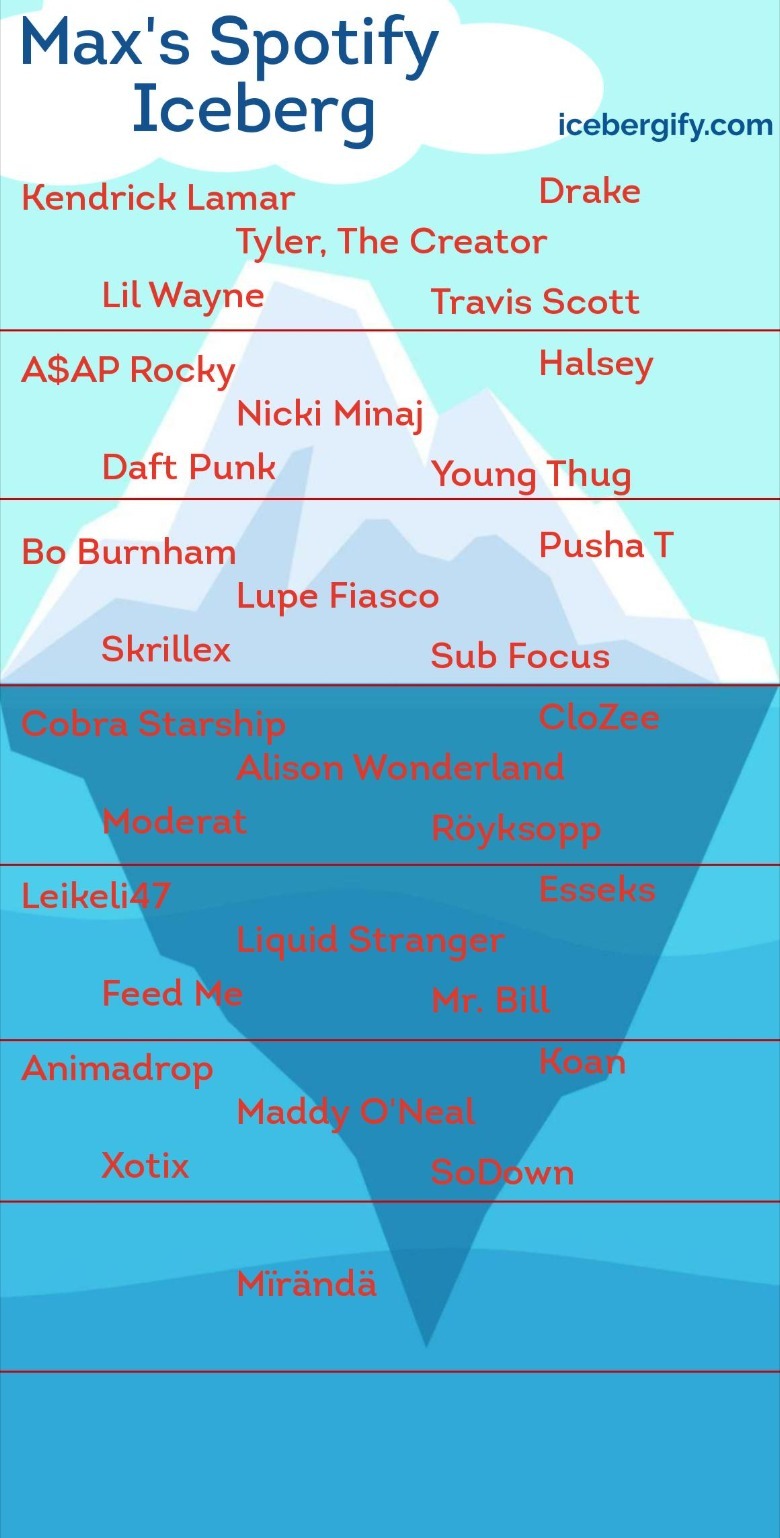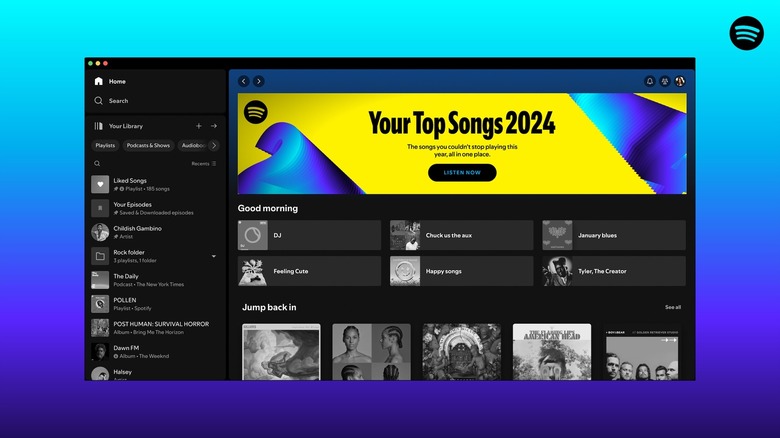What Is The Spotify Iceberg And Why Is It So Popular?
Most people have heard of Spotify Wrapped by now, as Instagram feeds experience a deluge of curated listening stats each December. But now, a growing number of Spotify users have found a new way to show off their taste in music with a meme that has grown in popularity over the past several years. So-called "Spotify icebergs" have taken corners of the Internet by storm, with people sharing the names of their most listened to artists atop pictures of a cartoon iceberg. These pictures reference a common format for online memes known as iceberg graphs, but depict people's individual musical proclivities rather than fandom interests. But how are people making Spotify icebergs, and why?
The Spotify iceberg trend was started by developer Akshay Raj, whose Icebergify tool generates the viral graphs. By tapping into Spotify's API , which allows third-party developers to connect to the streamer's services, Icebergify is able to see a user's listening history and use it to create Spotify icebergs. Of course, you can check your Spotify stats anytime you want, but these icebergs seem to appeal to our human desire to catalog our interests and share them with others. So, if you're trying to figure out what a Spotify iceberg is in the first place, or maybe create one for yourself, you've come to the right place. Here's what the Spotify iceberg is, how to understand them and their popularity, and how to create your own.
The Spotify Iceberg is an iceberg chart of your music tastes
When people refer to the Spotify iceberg, they're likely talking about the third party tool called Icebergify. At the most basic level, Icebergify is like Spotify Wrapped if it were made by users, but with a major twist. Like Wrapped, Icebergify will show you your most listened to artists, but it will arrange them in order of popularity rather than by the number of times you've listened to them. You can view your iceberg either in a monthly view that shows artists you've listened to during the current calendar month, or in an all-time view. You can use Icebergify whether or not you're signed up for Spotify Premium.
Just like the bulk of an iceberg is submerged beneath the water, hidden from sight, an iceberg chart divides cultural objects between mainstream and underground or obscure. They are most commonly used in fandom communities. For instance, a Marvel iceberg chart of different superheroes would list the most popular characters —Spider-Man, Iron Man, Captain America —on the above-water portion of the iceberg, while the more obscure characters such as, say, Agatha Harkness or Cypher go under the surface. In terms of the Spotify iceberg, you'll see the most mainstream artists you enjoy, like Kendrick Lamar or Taylor Swift, at the top of the chart, while the artists most people don't know about go near the bottom. Below is this writer's own all-time iceberg for the purpose of illustration. Note that as we move down the iceberg you may begin to see more artists with whom you are unacquainted.
Why is Icebergify so popular?
In our explainer on the untold story of Spotify Wrapped, we attributed the popularity of the year-end roundup feature to its shareability and virality. People love to share their musical tastes with other, in part because identifying oneself with a cultural object acts as a shorthand for personality, ideology, or social strata, but also because people enjoy finding like-minded music fans with similar tastes or showing off their uniqueness. Two people who both had Charli XCX's "Brat" as their top album share an interest they can bond over, so Spotify Wrapped can be a shortcut to friendship.
The Spotify iceberg fulfills a similar desire, but also serves another purpose: revealing underground or countercultural music. For as long as there has existed a musical underground, it has been a signifier of taste. Someone who enjoys obscure music may be seen as unique for example. With that in mind, it's easy to see the appeal of a chart that tells you just how far off the beaten path your musical tastes stray.
According to Icebergify's About page, "Streams, shares, saves, likes, and followers, among other factors, are taken into account" when determining where different artists appear on your iceberg. The fact that it's formatted as a popular meme format encourages sharing and virality. Not only can you see where you've expanded your musical horizons, you can also see where your tastes diverge from the average Spotify user. And while Spotify Wrapped can feel a bit pandering, Icebergify is made by a single developer who is unaffiliated with Spotify, which gives it the feeling of organic discovery.
How can you make your own Spotify iceberg?
If you're looking to make your own Spotify iceberg, the process is simple. All you need is your Spotify login credentials and an Internet browser. Simply navigate to Icebergify, then click on the button on the screen, labeled, "create yours." You'll be prompted to log into your Spotify account and give your permission to let Icebergify see your listening history by clicking the Agree button. In doing so, you will give Icebergify access to your Spotify account data, including "your name, username, profile picture, Spotify followers, and public playlists," as well as "your top artists and content," according to the permissions dialogue. According to Icebergify's privacy page, "The information collected from the user is limited to the Spotify account ID, username, and top 50 tracks and artists over the past several years." The page notes that data is only be used to create your iceberg, not stored.
Once you connect your Spotify account, you can see your Spotify Iceberg for the current calendar month. At the top of the screen is a button that will let you see an iceberg based on your all-time listening history too. If you want to save or share your iceberg, you can simply right click the chart and select "Save Image As." On mobile, holding down on the chart and selecting Download Image will do the same. After the image is saved to your computer or phone, you can share it as you would any other image. You can also use it to gain a better understanding of your music consumption habits. For example, if your iceberg shows relatively few artists below the water line, it may indicate that you have room to broaden your tastes.




